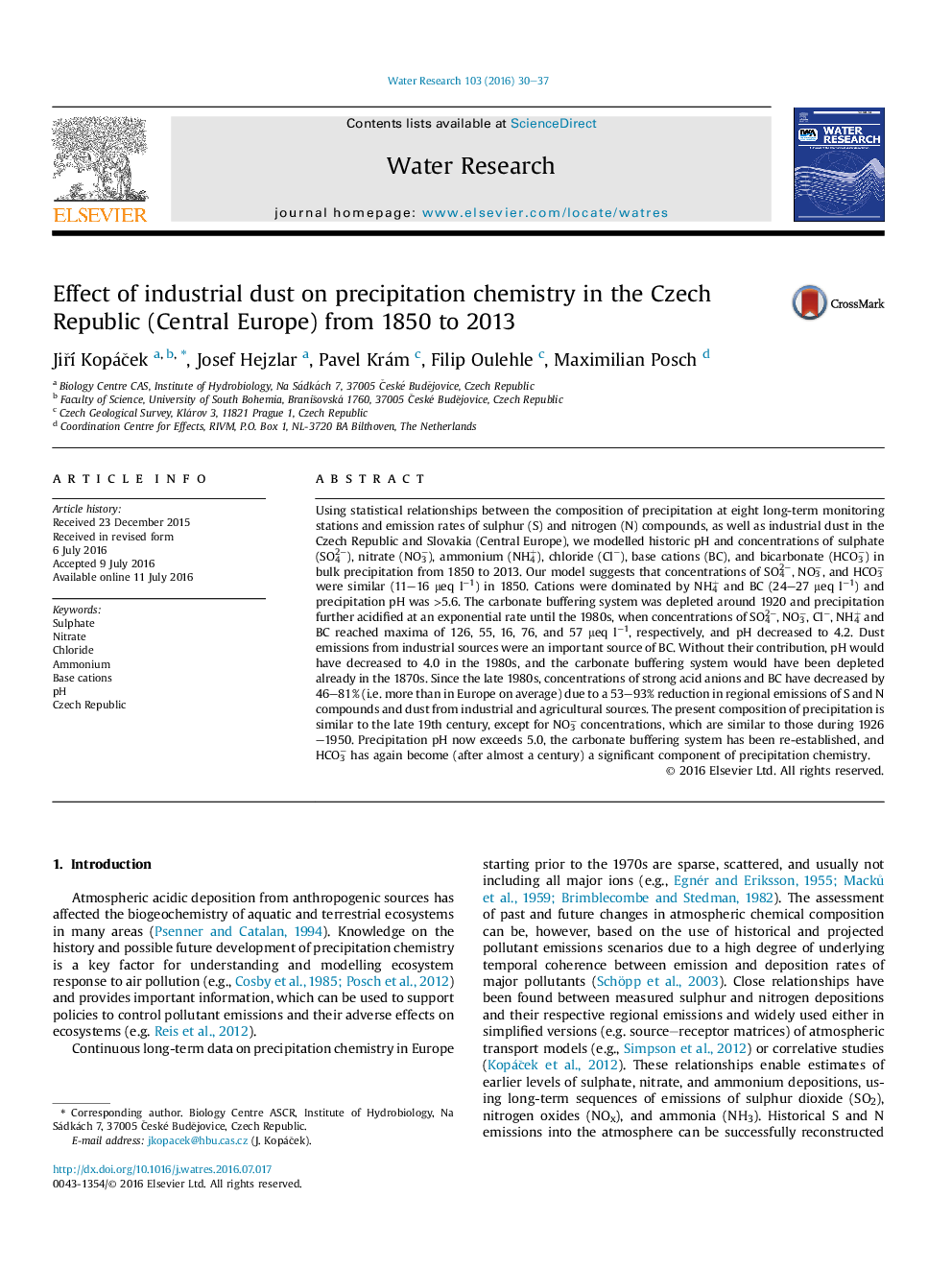| کد مقاله | کد نشریه | سال انتشار | مقاله انگلیسی | نسخه تمام متن |
|---|---|---|---|---|
| 6364425 | 1623065 | 2016 | 8 صفحه PDF | دانلود رایگان |
- Precipitation chemistry in the Czech Republic was modelled back to 1850.
- We show how its trends reflect socio-economical changes in Central Europe.
- Precipitation acidity was significantly mitigated by emissions of industrial dust.
- Carbonate buffering in precipitation was depleted during 1920-2010.
- Present precipitation chemistry is (except for NO3â) similar to that in 1850-1900.
Using statistical relationships between the composition of precipitation at eight long-term monitoring stations and emission rates of sulphur (S) and nitrogen (N) compounds, as well as industrial dust in the Czech Republic and Slovakia (Central Europe), we modelled historic pH and concentrations of sulphate (SO42â), nitrate (NO3â), ammonium (NH4+), chloride (Clâ), base cations (BC), and bicarbonate (HCO3â) in bulk precipitation from 1850 to 2013. Our model suggests that concentrations of SO42â, NO3â, and HCO3â were similar (11-16 μeq lâ1) in 1850. Cations were dominated by NH4+ and BC (24-27 μeq lâ1) and precipitation pH was >5.6. The carbonate buffering system was depleted around 1920 and precipitation further acidified at an exponential rate until the 1980s, when concentrations of SO42â, NO3â, Clâ, NH4+ and BC reached maxima of 126, 55, 16, 76, and 57 μeq lâ1, respectively, and pH decreased to 4.2. Dust emissions from industrial sources were an important source of BC. Without their contribution, pH would have decreased to 4.0 in the 1980s, and the carbonate buffering system would have been depleted already in the 1870s. Since the late 1980s, concentrations of strong acid anions and BC have decreased by 46-81% (i.e. more than in Europe on average) due to a 53-93% reduction in regional emissions of S and N compounds and dust from industrial and agricultural sources. The present composition of precipitation is similar to the late 19th century, except for NO3â concentrations, which are similar to those during 1926-1950. Precipitation pH now exceeds 5.0, the carbonate buffering system has been re-established, and HCO3â has again become (after almost a century) a significant component of precipitation chemistry.
339
Journal: Water Research - Volume 103, 15 October 2016, Pages 30-37
